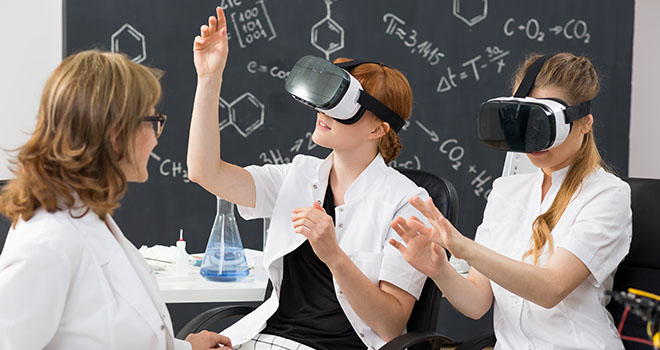
Virtual Reality in Education: A Transformative Learning Experience
Virtual reality (VR) has emerged as a groundbreaking technology, revolutionizing the way we learn and educate. In this article, we will explore the various aspects of virtual reality in education, its advantages, practical applications, and the challenges it presents. Virtual reality’s potential to transform the educational landscape is immense, offering immersive and engaging experiences that cater to different learning styles and abilities.
The Advantages of Virtual Reality in Education
VR in education offers several advantages. It creates an interactive and engaging environment for students, making learning fun and memorable. The use of VR technology can help improve student retention, understanding, and information recall. It caters to visual and kinesthetic learners, allowing them to comprehend complex concepts better.
Enhancing Learning through Immersive Experiences
One of the most significant benefits of VR in education is its ability to provide immersive experiences. Students can step into historical events, explore the human body in 3D, or travel to distant planets, all from the comfort of the classroom. This level of immersion sparks curiosity and fosters a deeper understanding of the subject matter.
Virtual Field Trips: Exploring Beyond Classroom Boundaries
Virtual field trips are a remarkable application of VR. Students can visit museums, archaeological sites, and other destinations without leaving the classroom. This expands their horizons, exposing them to a diverse range of experiences that traditional teaching methods cannot replicate.
Addressing Learning Disabilities with Virtual Reality
Virtual reality is a powerful tool for addressing learning disabilities. It offers a personalized learning experience, adapting to individual student needs. This technology can help dyslexic students, those with ADHD, or other learning challenges by tailoring content to their requirements.
Practical Applications in Various Subjects
VR is not limited to one subject; it can be integrated into various areas of education. Whether it’s science, history, mathematics, or literature, VR can enhance the learning process. Teachers can create customized VR content to suit their curriculum.
Challenges and Concerns
While VR in education offers numerous benefits, it also poses challenges. Ensuring accessibility and overcoming the digital divide is a significant concern. Additionally, issues related to the health and safety of students using VR need careful consideration.
Cost and Accessibility
The cost of implementing VR in schools can be prohibitive. Schools need to invest in VR hardware and software, which may not be financially feasible for all educational institutions. Addressing these cost-related issues is crucial for widespread adoption.
Implementing VR in Schools
Integrating VR into schools requires careful planning and training for teachers. They must be proficient in using the technology and creating content. Moreover, schools need to ensure students have access to the necessary equipment.
Future Trends in Virtual Reality Education
As technology advances, the future of VR in education is promising. We can expect more accessible and affordable VR solutions. The integration of artificial intelligence and machine learning will further enhance the educational experience.
Conclusion
In conclusion, virtual reality in education offers a world of opportunities. It engages students in ways that traditional methods cannot, making learning more enjoyable and effective. However, it also presents challenges in terms of cost, accessibility, and safety. As technology evolves, we can anticipate more innovative ways to harness the power of virtual reality for education.
https://projectworking0.blogspot.com/2023/11/enriching-education-navigating-realms.html

